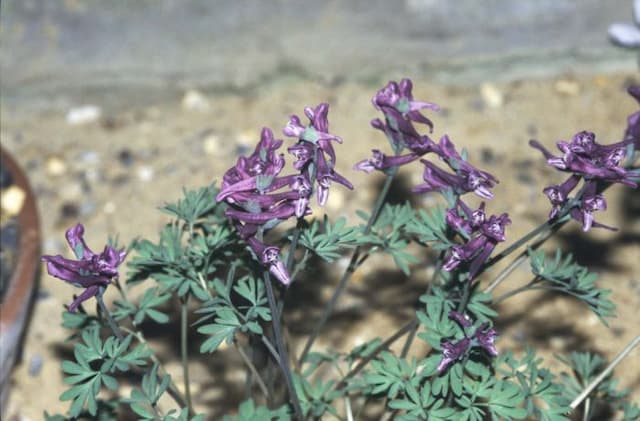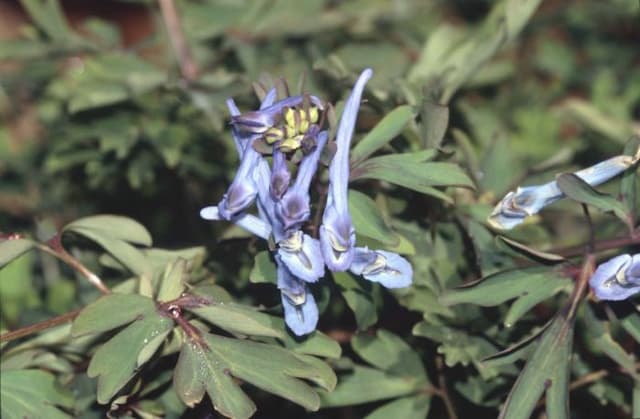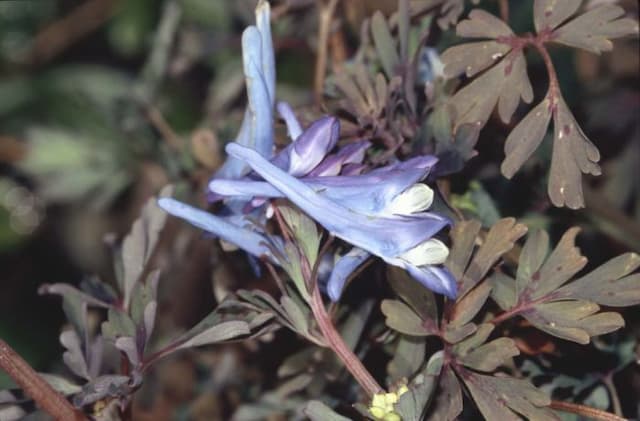Icelandic poppy 'Summer Breeze Orange' Papaver nudicaule 'Summer Breeze Orange'

ABOUT
'Summer Breeze Orange' is a sturdy plant forming a compact mound of grey-green, small neat leaves to 20cm high, 35cm wide. The single flowers, 5-6cm in diameter, are bright orange with a yellow eye, and attractive dark buds. Long-flowering, particularly if deadheaded
About this plant
 Names
NamesFamily
Papaveraceae
Synonyms
Iceland Poppy, Arctic Poppy, Icelandic Poppy
Common names
Papaver nudicaule
 Characteristics
CharacteristicsLife cycle
Perennials
Foliage type
Deciduous
Color of leaves
Green
Flower color
Orange
Height
1 foot 8 inches (50.8 cm)
Spread
1 foot (30.48 cm)
Plant type
Herb
Hardiness zones
2
Native area
Subarctic
Benefits
 General Benefits
General Benefits- Attracts Pollinators: The vibrant flowers of Iceland Poppy attract bees and butterflies, which are vital for pollination.
- Easy to Grow: Iceland Poppy is known for being easy to cultivate and care for, even for novice gardeners.
- Drought Tolerance: Once established, these plants have good tolerance for dry conditions, making them suitable for water-efficient gardens.
- Landscape Brightness: The fiery orange color adds a warm, bright touch to any landscape or garden design.
- Seasonal Interest: Iceland Poppies bloom in late spring to early summer, providing seasonal interest when planted in annual or perennial borders.
- Cut Flowers: The blossoms are excellent for cut flower arrangements due to their vivid color and delicate appearance.
- Wildlife Habitat: Apart from pollinators, Iceland Poppy provides habitat and food for other beneficial insects.
- Hardiness: These plants are cold-hardy and can survive in cooler climates or high altitudes.
- Fast Growth: Iceland Poppies grow relatively fast, quickly filling garden spaces with color and foliage.
- Blend with Other Plants: Their distinct appearance allows them to blend well with a variety of other plants in mixed beds or borders.
 Medical Properties
Medical PropertiesThis plant is not used for medical purposes.
 Air-purifying Qualities
Air-purifying QualitiesThis plant is not specifically known for air purifying qualities.
 Other Uses
Other Uses- Iceland poppy petals can be used as a natural pigment for art supplies, such as watercolor paints, due to their vibrant orange color.
- The long stems of Iceland poppies can be used in basketry, providing both structure and ornamental value to the handcrafted pieces.
- Dried Iceland poppy seedpods make interesting additions to floral displays or as part of homemade potpourri mixes.
- The plant's delicate blossoms are sometimes crystallized with sugar for edible cake decorations or as a gourmet garnish.
- Iceland poppy can serve as a natural indicator plant; its health can signify the soil's suitability for other plants that require similar growing conditions.
- The vibrant flowers can be used in photography and painting projects as a subject for practicing color harmony and composition skills.
- Leaves and stalks from the Iceland poppy can provide material for natural dyes for textiles, although not commonly practiced.
- The petals can be scattered in baths as part of a natural, at-home spa experience, lending a soft fragrance and color to the water.
- Children can use the hollow stems of the Iceland poppy as natural straws or for crafting simple musical instruments, like flutes.
- Iceland poppy's bright flowers can be used to attract and photograph beneficial pollinators, such as bees and butterflies, as a learning tool for ecology.
Interesting Facts
 Feng Shui
Feng ShuiThe Iceland Poppy is not used in Feng Shui practice.
 Zodiac Sign Compitability
Zodiac Sign CompitabilityThe Iceland Poppy is not used in astrology practice.
 Plant Symbolism
Plant Symbolism- Rest: The Papaver nudicaule, commonly known as the Iceland Poppy, is often associated with rest and recovery due to its sedative properties which were used in traditional medicine.
- Peace: Poppies in general symbolize peace. After World War I, they became a symbol of remembrance, representing the tranquility that follows conflict.
- Resilience and Remembrance: The Iceland Poppy, like other poppies, stands for resilience because it is a hardy plant that can grow in harsh conditions. It is also tied to remembrance due to the famous poem "In Flanders Fields" where the red poppies grew on soldiers' graves.
- Imagination: With their vibrant colors and delicate appearance, Iceland Poppies are thought to inspire creativity and imagination.
 Water
WaterThe Icelandic Poppy should be watered regularly with approximately 1 inch of water per week, ensuring the soil is moist but well-drained. It's important not to overwater, as this can lead to root rot. Water at the base of the plant to keep the foliage dry and prevent disease. During hot and dry periods, you may need to water the plant twice a week. Cut back on watering as the weather cools to encourage dormancy.
 Light
LightIcelandic Poppies thrive in full sunlight, requiring at least 6 hours of direct light each day for optimum growth. They perform best in a spot that receives morning sunlight and some partial shade during the hottest part of the afternoon. Avoid deep shade as this can impede blooming and weaken the plant's structure.
 Temperature
TemperatureIcelandic Poppies prefer cooler climates and can tolerate temperatures as low as 20°F for brief periods. Their ideal growing temperature is between 50°F and 65°F. While they can survive up to 90°F, prolonged heat can stress the plants and reduce flowering.
 Pruning
PruningPrune Icelandic Poppies to remove spent blooms and encourage a second flush of flowers. Deadheading, or removing faded flowers, should be done regularly. The best time for pruning is immediately after the first flowering period is over, which typically helps promote reblooming later in the season.
 Cleaning
CleaningAs needed
 Soil
SoilIceland Poppy thrives in well-draining, loamy or sandy soil with a neutral to slightly alkaline pH of 6.5 to 7.5. A mixture of garden soil, sand, and compost will create an ideal growing medium for this plant.
 Repotting
RepottingIceland Poppies are biennials and do not typically require repotting. They are best sown directly where they are to flower and left undisturbed.
 Humidity & Misting
Humidity & MistingIceland Poppy prefers a dry climate and does not require high humidity levels; average room humidity will suffice.
 Suitable locations
Suitable locationsIndoor
Provide bright light and well-draining, fertile soil.
Outdoor
Plant in full sun, well-draining soil, and protect from wind.
Hardiness zone
2-8 USDA
 Life cycle
Life cycleThe Iceland Poppy's life begins with seed germination, typically occurring in the cool temperatures of early spring or in autumn for regions with mild winters. Upon germination, the plant develops a rosette of feathery, lightly-hairy leaves at the ground level. As the plant matures, stems elongate and produce buds that will become bright orange, cup-shaped flowers, attracting pollinators to the garden. Following pollination, flowers will develop into seed pods, releasing numerous tiny seeds when ripe. These seeds may go dormant during unfavorable conditions, awaiting the next cycle of cool weather to germinate. The Iceland Poppy often behaves as a short-lived perennial or biennial, potentially completing its life cycle in two years, although it can also be treated as an annual in some regions.
 Propogation
PropogationPropogation time
Spring
Propogation: The Iceland poppy, known scientifically as Papaver nudicaule 'Summer Breeze Orange', is typically propagated by seed. The best time to sow the seeds is in late winter to early spring, ensuring that the soil is moist but well-drained. To propagate, distribute the tiny seeds sparingly across the surface of a seed-starting mix and lightly press them into the soil, as they require some light to germinate effectively. Keep the soil temperature around 55 to 65 degrees Fahrenheit (12 to 18 degrees Celsius) and maintain consistent moisture without making the soil waterlogged. Germination usually occurs within 14 to 21 days, after which the seedlings can be thinned as needed and eventually transplanted into the garden once the risk of frost has passed and they've developed several true leaves. It is crucial to handle the delicate seedlings with care to avoid damaging the fine roots.









